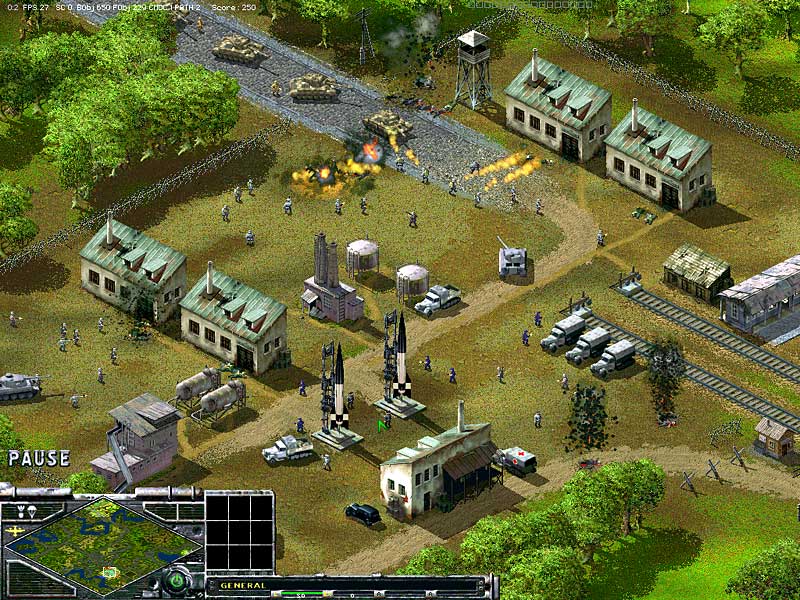

Luckily, they've been included in the campaigns for the other nations as well. Since the game features a new Japanese campaign, they had to include lots of controllable boats. Infantry are also vulnerable to the new infantry mines that the designers have included.įireglow has also decided to add around 50 new units to the 100 or so from previous games. Fortunately, they also have new stances to minimize their exposure to enemy fire. We've noticed that the infantry seem much more susceptible to attacks now, for instance. Many of the game's existing units have more distinct and realistic values this time around. It's a small thing but it makes a big difference when you're trying to figure out how best to use your units. Sudden Strike 2 not only features a much tighter sync between the briefing animations and the voiceovers, it also allows you to isolate key points in the briefing and view just the animation for that particular action. Thankfully, the mission briefings seem to make more sense this time around. The lack of tanks (and their poor suitability for the terrain in question) mean that the Japanese campaign is the hardest of the five. Covering almost the entire length of the war with America and the other Allies in the Pacific, the Japanese campaign features lightning quick island assaults toward the start and gradually shifts into defensive wars of attrition towards the end. Some of the American missions will let you keep your units from mission to mission, so thoughtful strategy is a necessity.Īnd finally the island-hopping exploits of the Japanese are being featured. Instead of storming the shores at Normandy you'll be pushing the Germans back across the Rhine. It begins after Market Garden (brazenly ignoring the IDSA's recent ruling that all WWII games feature an Omaha-style beach-landing level). The difficulty level drops down a bit for the American campaign. Your paratroopers and riflemen will be up against staunch German defenses so misdirection and maneuver will be your main allies. Starting with Market Garden, the whole campaign focuses on the battle for Arnhem and the Bridge Too Far. Things get a bit harder for the British missions. The Russians start small and finish big, taking over material and munitions left behind by the fleeing Germans. The Russian campaign will culminate with the taking of Berlin. That fall, the Russians along the Voronezhsky and Stepnoy fronts pushed forward, retaking Kharkiv and eventually crossing the Dnieper river. You'll march into the Ukraine at the end of February in 1943 and command the light infantry and tanks along the Voronezhsky front.įrom here, you'll take the reins in the Russian counter-offensive. Featuring all-hot, all-Ukrainian action ranging from Tchutovo to Kharkiv, the German campaign is the easiest and starts off the entire sequel. Starting off the game is the German campaign. The addition of persistent units that carry their experience from mission to mission (well, for just a few of the missions, at least) means there's more than just a straight narrative link tying the missions together. As these are all drawn from the game's five campaigns, the balance should be taken up by the game's ten or so single-shot scenarios.

We've had an early playable build for a while though and have finally begun to see some of the ideas put into action.Īlthough we've been promised approximately 40 missions the current build only lists 31. We've already covered much of the general information gleaned from our meeting with the folks behind the game at CDV and Fireglow. Bridging the divide between historical accuracy and playability, Sudden Strike was proof positive that you could have a serious wargame that was approachable by the traditional real-time strategy gamer.


 0 kommentar(er)
0 kommentar(er)
